WHEN I LAST WROTE WORDS TO YOU HERE we were packing the van in preparation for a long trip north, in the bright days of July, during that long ago, all too short summer that tickled our shores so briefly. Since then many adventures have been had, and ways wended, many stories told and born and sold and worn. We have been so extremely busy that I've really not had a spare minute to check emails and keep up with the daily necessaries, let alone keep this log woven with new colours.
Now it is autumn, and the skies are folding us in. These days are for reflection and rest. So I sit here at the kitchen table on a grey after-dawn and unpack my travelling bag at last. I have much to tell, so I'll not write it all in one go. Today, I'll take your hand and pull you back with me to a summer day, on a road going north from here, our bellies full of the unknown, our heads dancing with a well-rehearsed story, and the little red van full of paintings and storytelling masks and folding chairs and food for the journey and pots and pans and flasks of tea and firewood and accordions and a trembling grey lurcher who doesn't like travelling very much...
...when what should appear up ahead of us but a bright and outlandish motorway neighbour - the trailer of a tattoo artist perhaps?
We have been driving for some hours, with map and music; the road rolls under our wheels keenly, and sights flash by. We speed on through England, past villages, hamlets and towns mostly tucked away from the big roads, continuing happily in their quotidians, unravelling their own stories, as we unravel ours.
A little way off the M6 in Cheshire, we decide to stop for lunch. Some smaller roads and lanes bring us here - past a sign that says "To The Edge" - to this tranquil green and singing beech wood.
Macha (who is still wearing her seatbelt-harness) is relieved to have stopped hurtling; she leaps delighted out of the van and promptly scurries off, nose to forest floor, in search of things only dogs know about.
We have brought our little Frontier Stove out into the woods with us, to heat our lunch. It's ideal for having a fire in a place folk might not want you to have a fire. It unfolds pleasingly and leaves no scorched circle behind.
We are in Alderley Edge, famous thanks to Alan Garner's reawakening of its legends in his brilliant books.
The smoke and the dappling sunlight fuse a peace into the afternoon, away from roads and people. We delight in the wide carpet of quiet space beech trees make at their feet.
And we sit in awe under the high high canopy of green, which dances with daylight and birdsong and the gentlest of breezes.

We are thankful and fed. And now, refreshed, we must drive on, promising ourselves that next time we come here, we'll go beyond the beech wood and to The Edge.
On the road again, and we pass another outlandish load. The skies begin to darken.
Eventually, as the evening edges towards us, the north a little nearer, we leave the main roads and wend our way through the beautiful Lake District to look for a park-up. These are tiny dry-stone-walled lanes, steep and sheep-scattered, climbing over streams and little ancient bridges.
We stop eventually in a secluded spot by a little river where we'll spend the night.
It's not raining yet, so we set up the kitchen on the green riverbank.
After dinner, as dusk rolls in, we play music for the cows on the other side of the river.
And they come over to listen.
That night is quiet and rainy, only the river rushes through our dreams. Breakfast is had in the same spot and a friendly farmer comes upon us there, wishing us a good morning. We pack up reluctantly; our first performance is to be the following night, and we have miles more to drive, not to mention much to prepare once we arrive. We must leave these hills and cows in meadowsweet-edged fields and drive on...
The clouds rain on our leave-taking and our roads wind up and down between the lakes. The north-western edge of this island is striated with water-filled valleys etched there by glaciers millions of years ago. The land is high and beautiful, and it rolls us along between its shoulder blades on this wet, wet morning in July.
Misted fells, patchworked with stone walls rush by the van windows.
And every so often: lakes. They appear like magic, out of the mist-green, beyond the trees. We stop beside one for lunch. The air is heavy and you cannot see far. All the peaks are cloud-shrouded. Not many people are about.
We cross the border into Scotland and reach our friends Dougie and Em Strang in time for late lunch. Their house is warm and laughing with children. It is surrounded by a forest.
The following night is our first performance... we are nervous as can be. The theatre where we are to perform is in Moffat, a small border town which I know quite well from my days living not very far from there. We arrive early. The sun illuminates the venue from behind parted rain clouds. A theatre! We're performing in a theatre! The hilarious terrifying ridiculousness of this bubbles very close to the surface. We are used to telling our stories outdoors by a fire under the stars where mistakes are not mistakes, but just colour in the firelight of a human recounting a tale, or playing a tune to friends.
But here, we have a dressing room! With lights around the mirror! Suddenly we imagine that we are doing an am-dram tour of provincial seaside theatres, and the hilarity combines with our now quite overwhelming nerves, and we look at each other in the mirror, listening to the sound of the audience arriving through the door to the foyer, and wonder why we do these things...
Between breathing and trying to keep the energy up and the terror at bay with some yoga on the dressing room floor, I manage to take a couple of photographs in the light-edged mirror.
Here we are just before "the call". And on the right: my great grandparents on my father's side who were Music Hall Artistes and travelled far and wide with their performance. Their act was called the 'Hellman Cousins' or 'Helm & Cousins' - nobody's very sure. I know they toured America and other countries as well as the UK around the turn of the century. By all accounts, they spent most of their earnings on drink. Though I lack my great grandmother's obvious stage confidence, I liked comparing us for that brief moment in the dressing room mirror of a small theatre.
The performance goes well after all, though the audience is small. We hadn't realised it coincided with the opening night of the Olympics. A couple of neighbours from my old village in South Lanarkshire come along after having seen the poster in town. I sell a few prints in the foyer afterwards, and we go home exhausted and relieved that the 'first night' is over.

Then, all too soon, it is time to leave... We must head to Glasgow through yet more rain to our next stop: The Galgael Trust. An organisation with probably my favourite logo ever, and who cannot cheer for premises on an industrial estate stating established 9th Century?!
We are brought tea and biscuits and water for Macha and sit there drying off and taking in the beauty and craft around us in this refuge-on-an-industrial-estate.
An old local woman has popped in to have a Victorian Whipping Top mended, and sits drinking tea there too whilst it is done. We feel at home.
A portrait on the wall celebrates Colin McLeod, beloved departed founder of the Galgael.
Beyond the reception room is a cavernous workshop. High ceilinged and bedecked all around with interesting carvings and boats and friendly folk.
Soon enough the scene is becoming cosier and seats are laid out. As the nerves make their unwelcome yet unavoidable appearance, Gehan and Ian show us the boats.
The sun glints on us as we walk by root and river...
...and find hidden there: Ossian's Cave.
In the haze of the advancing afternoon, we come across an iridescent lizard, trampled into the path, no less beautiful for its death.
And now we must drive on. We have ferry tickets booked from the port at Ullapool tomorrow morning, and we have many miles more of Scotland to drive through.
The highlands are indescribably beautiful. We reach the road to Ullapool as the dusk is coming in. Already there is a carpet of midge corpses smearing the windscreen.
We park up by old travelling friends Andy and Mel (whom some of you may remember from back then). Andy was away visiting his mum, who had broken her leg, so we spent the evening with Mel and several million midges.
Andy and Mel have lived off grid on this spot for a few years now, but have plans to head further north horse-drawn when the winter has passed, after having given up driving altogether recently.
Steak is cooked on the stove, a tune or two is played, news of the past years is exchanged. All around us the hills tower magnificent and silent.
But we cannot stand the terrible midge-biting for long: they are in our hair and eyes and mouths and ears and will not leave off biting, despite the layer of horrible deterrent we've slathered over our skin. So we retreat into our respective vehicles and sleep a dream-filled sleep.
Sun greets the next morning, golden and awake. We bid farewell to Mel and head to the Atlantic ocean.
Gradually we leave the jagged blue skyline and the archipelago of islands behind. I am stunned with the beauty of this edge of our land. I have never been here before, never crossed over this northern sea to the Outer Hebrides. I had expected lashing grey Scottish mizzle, but instead this topsy-turvy summer gifts us with a topaz theatre, filling my vision, shimmering with a beauty that is starting to pull at my soul.
We stand up on deck and the sea blows blue through our hair, whisks out any stagnation we had festering in us and flings it overboard.
Every so often, people get up and rush to one side of the ferry or another. Killer whales and dolphins are spotted far off, leaping through the water! All I manage by way of a photo (above) is some sea with a hint of what could be the Loch Ness Monster or the shadow of a gull. But we see them, and it makes us happy.
We stop at the spectacular Callanais (pronounced Callanish) stone circle. A group of megaliths erected over 4000 years ago on the west of the island.
And on we drive, further west, further and further away from the busy mainland.
There are terraces cut into the peat all over the island. Often we see a little wheelbarrow and bag and spade left on someone's peat patch.
We cannot stop gasping at the beauty and intensity of the landscape we are moving through. The rock is powerful.
By chance we see a large wooden carving of one of the Lewis Chessmen, sitting kingly over the spot where the hoard is said to have been discovered.
We're nearly there, but the late afternoon sun and this wide sandy inland beach calls to us; and our sea-bronzed cheeks and our road-weary eyelids will let us fight no more. We lie here on this soft sand on this far flung island, and sleep.
The rock underneath us and all around us speaks.
They look out on a point of land that borders the Atlantic ocean, and there is nothing and everything all around their house.
I am very moved by the feeling in this rock. It is Lewisian Gneiss, we learn - the oldest rock in Britain. I become more and more fascinated as David explains incursions and other long-ago geological magics.
There are bog plants, too: small and hardy, plants you could imagine growing across the Arctic tundra, so different from those tall greenings we find in southern hedgerows. Cotton grass flits above the peat in deft little wefts.
By the next day, the clear sunny skies have been replaced with Hebridean cloud, and a different kind of quietness. We go out exploring again.
One way is sea. The other way are bare mountains. The rock still calls me with its ancient old voice. It has aeons and footprints of time etched into its bone. It knows things.
We find a hole, not unlike the entrance to the Underworld our hero Ivan will have to venture down again later today when we tell our story to the folk of Lewis.
Just looking at it gives us vertigo. You can hear the sea at the bottom, though you cannot see it. Bold little plants grow on the sheer edge.
On the last day there, I wander out to the point with Macha and clamber amongst the rocks and crashing silence.
We park up overnight high up in the Harris peaks. Cloud is all around us, water below.
We look happy and alive in the photograph we take of ourselves on the top of this hill. The journey has scuffed and rounded us, it has stretched us and led us, and we are bigger because of it.
Morning coffee is made early; our ferry leaves soon.
We keep imagining what this land was once like when covered in Caledonian forest.
We stop to rest and eat by a loch fringed with fireweed. Scotland is very long, and there are many miles before we reach the border, but we are sad to be leaving; these western isles and western hills have moved some Scottish part of us.
Further on and the sun creeps back again...
...dancing a cloud-chase over these fissured ancient mountains that surround us.
As we hurtle on southward, the clouds move back further, and a whole rainbow perches beautifully over the moors.
By evening we still have not reached England. We park up just a few miles from where I used to live in the South Lanarkshire hills...
And meet the next morning a little green riddle hiding in the grass:
These hills which I once loved to walk in, have in the intervening years been prodded all over with wind turbines. I find the once-familiar skyline quite shocking. Everywhere you look these huge things loom and bristle.
And so, home.
We made the rest of the journey in one day and collapsed into bed, filthy and brimming and tireder than we knew was possible.
I notice that I have begun and ended this post with photos of motorways, which is unlike me. I like all my doings to be bedecked with aesthetic delight, devoid of cars or industrial inorganic trappings. But on this journey we passed through both exquisite beauty and exquisite ugliness. This sacred greengrey land of ours is heavy with a human-made mantle it did not want. Widening ribbons of tarmac and retail distribution centres choke it.
And in all the nooks of Britain, thrive good people striving to re-weave the old songs, rekindle the old tribes into marching. They are there, and our journey stitched a few together, binding them as pages into our new book of the road.
Thanks and love to all the folk we met along the way for feeding and housing us, for telling us stories and for listening to ours.
But here, we have a dressing room! With lights around the mirror! Suddenly we imagine that we are doing an am-dram tour of provincial seaside theatres, and the hilarity combines with our now quite overwhelming nerves, and we look at each other in the mirror, listening to the sound of the audience arriving through the door to the foyer, and wonder why we do these things...
Between breathing and trying to keep the energy up and the terror at bay with some yoga on the dressing room floor, I manage to take a couple of photographs in the light-edged mirror.
Here we are just before "the call". And on the right: my great grandparents on my father's side who were Music Hall Artistes and travelled far and wide with their performance. Their act was called the 'Hellman Cousins' or 'Helm & Cousins' - nobody's very sure. I know they toured America and other countries as well as the UK around the turn of the century. By all accounts, they spent most of their earnings on drink. Though I lack my great grandmother's obvious stage confidence, I liked comparing us for that brief moment in the dressing room mirror of a small theatre.
The performance goes well after all, though the audience is small. We hadn't realised it coincided with the opening night of the Olympics. A couple of neighbours from my old village in South Lanarkshire come along after having seen the poster in town. I sell a few prints in the foyer afterwards, and we go home exhausted and relieved that the 'first night' is over.
The next morning calls for action: we have to prepare the barn at Elshieshields where we are to tell our story later that day. I hang an exhibition of my paintings around the whitewashed stone walls, we rig rudimentary stage curtains and hang my silhouette backdrop which accompanies all the stories in front of the woodburner. Chairs are laid out. Rain hammers on the roof. Dougie is our right hand man - helping and organising and arranging beyond the call of duty. Em and their girls bake cakes for the audience meanwhile in the kitchen
Only one photo emerges from the actual event, which turns out to be a most excellent success. The fire flickers behind the silhouette forest, and Tom's voice and my accordion weave together artfully to tell the tale they had come here to tell. This time we are less anxious, but worry that that will mean we are not on the ball enough. The concerns of perfectionists never cease! The other photographs here of us being silly in front of the backdrop are taken after the performance by Dougie. We are glad and relieved and even more exhausted.
But there is a rare recording of this story, made by clamping our recording device to the beam above our heads. Here it is for those of you who think you might never get to one of our tellings. It's an hour and a half long, so save it for a rainy broth-bubbling firelit afternoon. Forgive our hiccups and enjoy the journey!

That evening we set a large table in the barn where the audience had sat and eat dinner with friends amid my candlelit paintings.
And Dougie and Em's daughter Mara serenades us beautifully and shyly on her harp.
Over the next few days we have a chance to rest and enjoy time with our friends. Ann Shukman, who owns Elshieshields tower and who was responsible for instigating our Russian-themed storytelling here, kindly shows us around the tower which houses her incredible collection of icons and other Russian art. Forgive the mediocre quality of my photos, but the tour was in low light, and fairly quick!
On these resting days, we sit with Em, Dougie, Fern and Mara in the grass and chat, we walk with Macha amongst trees, we sleep and read and laugh and eat food around a fire. We are even visited by a sparrowhawk who arrives injured and has to be taken away by the RSPCA to mend.
Then, all too soon, it is time to leave... We must head to Glasgow through yet more rain to our next stop: The Galgael Trust. An organisation with probably my favourite logo ever, and who cannot cheer for premises on an industrial estate stating established 9th Century?!
The Galgael Trust is situated in the heart of Govan, a notoriously deprived area of Glasgow on the south side of the river Clyde. Govan was once home to a world renowned shipbuilding industry which over the latter part of the twentieth century saw a massive decline. In place of shipyards today, there is widespread long term unemployment, social problems and severe poverty. The Galgael Trust was created to fight this by rebuilding a lost sense of community, craft and connection to the land. They seek to reform links with the ancient tribes of the Gael by building wooden sea going rowed longships - the Birlinn - and creating once more a heart, a warm hub to this community which has had its heart broken. Or as one person described it to us: "people here have been disenclanchised".
As their website says:
The very name GalGael is our way of re-rooting these notions of identity in nourishing ground and recognises that there is both a bit of the stranger and a bit of the native in us all. In history, Gal Gaidheal were a 9thC people; the Gal - the ‘strange or foreign’ Norse, embraced by the Gael - the 'heartland people'.
We are welcomed out of the rain into a cosy and beautiful reception room, full of carved wooden objects, and cheerful salty Glaswegians.
We are brought tea and biscuits and water for Macha and sit there drying off and taking in the beauty and craft around us in this refuge-on-an-industrial-estate.
An old local woman has popped in to have a Victorian Whipping Top mended, and sits drinking tea there too whilst it is done. We feel at home.
A portrait on the wall celebrates Colin McLeod, beloved departed founder of the Galgael.
Beyond the reception room is a cavernous workshop. High ceilinged and bedecked all around with interesting carvings and boats and friendly folk.
People are already moving benches and old shipping paraphernalia, setting the scene for a cosy storytelling in an industrial workshop. How incongruous the venues we choose can be! We begin unloading my paintings from the van to put on display and almost instantly armies of helpful people rush to our aid with hammers and boards and ropes and nails and "where would you like that?"s. I've never had so much help setting up a show before!
A monstrous industrial burner (that big green thing on the left below) is lit to serve as firelight for my backdrop. Normally this pumps hot air around this cavernous space to warm the workers in winter. I mentioned that I needed a chair to sit on to play the accordion and they brought me a hand carved throne!
Soon enough the scene is becoming cosier and seats are laid out. As the nerves make their unwelcome yet unavoidable appearance, Gehan and Ian show us the boats.
And I practise my tunes in possibly the most apocalyptic setting yet.
This performance is the best of the tour. All the seats are filled, and the audience is vociferous. Our performance is well rehearsed but never the same twice. Tom notoriously tries to invent new and increasingly outlandish dishes for the giants to prepare, and in between the tunes I've planned, the colour and sound effects I provide with my accordion are spur of the moment responses to the atmosphere being conjured. Throughout the hour and a half, my senses are hooked utterly into Tom's words, so that my playing mirrors the mood exactly. Perhaps 5% of my attention is in the room at large when I'm actually playing. This kind of attention is very exhausting, but seems to be the only way we know how to embody a story. The recording up there will only give you a glimpse of a sense of actually taking part in that story-journey in the way you do when you're a member of the audience. Each time I miss a note or realise Tom has forgotten a tiny detail, my heart leaps out of my belly, but I must control it or else I'll lose the spell altogether.
In this Galgael audience sits a small boy who puts his fingers in his ears whenever Baba Yaga appears. He can't bear to listen, he says: it is too frightening. At the front of the crowd in a wheelchair sits a large lady with a strong Glaswegian accent, a long time supporter of the Galgael, who is apparently a fiercely honest critic of performances held there. She hollers and whoops at intervals throughout the whole tale, cheering on the hero, booing the witch, and commenting out loud again and again how much she is enjoying this! The rest of the crowd, uncomfortable at first with such vocal audience participation, begin slowly to enjoy her comments as part of the whole experience, and we do too. In the moments when I stop playing I am able to smile to myself and reflect how large a part in any performance the audience plays: they are the other half of the circle. Without their energetic input and support and participation in the magic, the spell just cannot be cast. At the end, they all stand and cheer, and we grin to ourselves. It has gone well.
Linda, this most notable member of the audience, thanks us from the bottom of her heart for bringing the spirit of the Galgael alive that evening, and we know she really means it.
After our story, some stunning Bulgarian singing and original music is performed by Viara Ivanova. There is food, and there are friends, and our third storytelling, which this time raises money for this wonderful, inspiring, real and uplifting place, is over! We must pack up the whole exhibition in a handful of minutes and wend our way through the now dark streets of Glasgow to the home of Svenja Meyerricks and Luke Devlin who kindly put us up for the night and feed us breakfast the next morning before our long drive north. By now, Macha is thoroughly bemused by the whole escapade and rolls her eyes at us visibly, as we take her for a wee in a little patch of urban green so very far away from her moor.
Our road north from Glasgow is long and beautiful. Scotland is big! The further up we drive, the more distant we feel from the mad thrum of the south. The signs become Gaelic.
Lunch and the afternoon is spent in the company of the tall trees at The Hermitage, Dunkeld alongside the crashing beautiful waters of the river Braan.
The sun glints on us as we walk by root and river...
...and find hidden there: Ossian's Cave.
The water froths through the forest and throws loud fresh jewels into our eyes as we sit by it. The greenness is a sound and the rocks are scooped-out undulating artefacts, sculpted by the time of water.
There are gold coins of light scattered at the trees' feet. We walk on, enchanted.
In the haze of the advancing afternoon, we come across an iridescent lizard, trampled into the path, no less beautiful for its death.
The highlands are indescribably beautiful. We reach the road to Ullapool as the dusk is coming in. Already there is a carpet of midge corpses smearing the windscreen.
We park up by old travelling friends Andy and Mel (whom some of you may remember from back then). Andy was away visiting his mum, who had broken her leg, so we spent the evening with Mel and several million midges.
Andy and Mel have lived off grid on this spot for a few years now, but have plans to head further north horse-drawn when the winter has passed, after having given up driving altogether recently.
Steak is cooked on the stove, a tune or two is played, news of the past years is exchanged. All around us the hills tower magnificent and silent.
But we cannot stand the terrible midge-biting for long: they are in our hair and eyes and mouths and ears and will not leave off biting, despite the layer of horrible deterrent we've slathered over our skin. So we retreat into our respective vehicles and sleep a dream-filled sleep.
Sun greets the next morning, golden and awake. We bid farewell to Mel and head to the Atlantic ocean.
The ferry port at Ullapool is small and friendly, and we are blessed with exquisite weather. The skies are clear blue and whisped with white clouds. The water is calm and laps the small off-shore islands quietly as the boat takes us out toward the open sea.
Gradually we leave the jagged blue skyline and the archipelago of islands behind. I am stunned with the beauty of this edge of our land. I have never been here before, never crossed over this northern sea to the Outer Hebrides. I had expected lashing grey Scottish mizzle, but instead this topsy-turvy summer gifts us with a topaz theatre, filling my vision, shimmering with a beauty that is starting to pull at my soul.
We stand up on deck and the sea blows blue through our hair, whisks out any stagnation we had festering in us and flings it overboard.
Every so often, people get up and rush to one side of the ferry or another. Killer whales and dolphins are spotted far off, leaping through the water! All I manage by way of a photo (above) is some sea with a hint of what could be the Loch Ness Monster or the shadow of a gull. But we see them, and it makes us happy.
In time, land is sighted. The Isle of Lewis! Small buildings scatter the coast. A lighthouse, some houses.
We drive through the island which is empty. Miles and miles of treeless peaks, peat bog and water. The skies are still blue for us. Every so often we pass a house or two, remarkably modern and ugly, each with its former traditional blackhouse in ruins a few feet away. The houses have no trees to hide them, for trees struggle to grow tall on these windswept islands. Many people grow pampas grass as a barrier behind which to nurture less wind-hardy plants.
There's a wild and strange feeling to this place. I like it.
We stop at the spectacular Callanais (pronounced Callanish) stone circle. A group of megaliths erected over 4000 years ago on the west of the island.
And on we drive, further west, further and further away from the busy mainland.
There are terraces cut into the peat all over the island. Often we see a little wheelbarrow and bag and spade left on someone's peat patch.
We cannot stop gasping at the beauty and intensity of the landscape we are moving through. The rock is powerful.
By chance we see a large wooden carving of one of the Lewis Chessmen, sitting kingly over the spot where the hoard is said to have been discovered.
We're nearly there, but the late afternoon sun and this wide sandy inland beach calls to us; and our sea-bronzed cheeks and our road-weary eyelids will let us fight no more. We lie here on this soft sand on this far flung island, and sleep.
The rock underneath us and all around us speaks.
And as the high northern summer sun moves a little lower in the sky, we head on, remoter still... to the end of the far western road.
And there, on a croft in the tiny hamlet of Breanish, live Sharon Blackie and David Knowles, creators of Two Ravens Press and Earthlines Magazine.
They look out on a point of land that borders the Atlantic ocean, and there is nothing and everything all around their house.
As the last rays of sun cast pink gold across the hamlet, David takes us out to the point, and shows us this wild and lonely and wonderful place.
I am very moved by the feeling in this rock. It is Lewisian Gneiss, we learn - the oldest rock in Britain. I become more and more fascinated as David explains incursions and other long-ago geological magics.
There are bog plants, too: small and hardy, plants you could imagine growing across the Arctic tundra, so different from those tall greenings we find in southern hedgerows. Cotton grass flits above the peat in deft little wefts.
By the next day, the clear sunny skies have been replaced with Hebridean cloud, and a different kind of quietness. We go out exploring again.
One way is sea. The other way are bare mountains. The rock still calls me with its ancient old voice. It has aeons and footprints of time etched into its bone. It knows things.
We find a hole, not unlike the entrance to the Underworld our hero Ivan will have to venture down again later today when we tell our story to the folk of Lewis.
Just looking at it gives us vertigo. You can hear the sea at the bottom, though you cannot see it. Bold little plants grow on the sheer edge.
And then it is time to prepare for our fourth and final storytelling. This venue is different again: we conjure a little makeshift stage in the shed where the animals winter, and farming paraphernalia is stored.
This audience is the smallest yet: about 8 people come from far off on the island to hear our tale. Afterwards we all enjoy a feast cooked by Sharon and learn about life on Lewis from these islanders.
Sharon and David have traditional crofting rights to a lot of land around their individual croft. Here they graze sheep and a cow. They also raise pigs, poultry and vegetables (which is a much hardier task than down south: Brussels Sprouts have to be grown in the poly-tunnel!). Peat-cutting for fuel is still common here too, and crofters have an area of peat bog allocated with each croft. Perhaps next time we'll get the chance to sit by a peat fire.
On the last day there, I wander out to the point with Macha and clamber amongst the rocks and crashing silence.
This place, I decide, is a place to come to be alone. It feels like a last refuge on the edge of Britain - a place where nobody else is, a place still big with The Numinous, still wide and open and un-fenced.
I crouch by the grey-green pools which dance with seaweeds and salt.
The stones and the limpets and the barnacles and the wracks and the unnameable things of this Hebridean seashore all sing to me. And I sing back.
Having reached the zenith of the arc of our journey here on the farthest tip of land, we begin the slow wend homewards. The ferry leaves tomorrow morning from Harris - the southern part of this island. We drive most of the way that evening, climbing higher and higher between mountains whose heads are hidden in cloud.
We park up overnight high up in the Harris peaks. Cloud is all around us, water below.
We look happy and alive in the photograph we take of ourselves on the top of this hill. The journey has scuffed and rounded us, it has stretched us and led us, and we are bigger because of it.
Morning coffee is made early; our ferry leaves soon.
The homeward road is no less beautiful than the outward bound. The ferry crossing is grey where the first was blue, and we arrive on Skye which feels like a bustling metropolis compared to where we've been.
The land we drive through is endlessly stunning. It is jagged with mountains and lochs.
We keep imagining what this land was once like when covered in Caledonian forest.
Further on and the sun creeps back again...
...dancing a cloud-chase over these fissured ancient mountains that surround us.
As we hurtle on southward, the clouds move back further, and a whole rainbow perches beautifully over the moors.
By evening we still have not reached England. We park up just a few miles from where I used to live in the South Lanarkshire hills...
And meet the next morning a little green riddle hiding in the grass:
And so, home.
We made the rest of the journey in one day and collapsed into bed, filthy and brimming and tireder than we knew was possible.
I notice that I have begun and ended this post with photos of motorways, which is unlike me. I like all my doings to be bedecked with aesthetic delight, devoid of cars or industrial inorganic trappings. But on this journey we passed through both exquisite beauty and exquisite ugliness. This sacred greengrey land of ours is heavy with a human-made mantle it did not want. Widening ribbons of tarmac and retail distribution centres choke it.
And in all the nooks of Britain, thrive good people striving to re-weave the old songs, rekindle the old tribes into marching. They are there, and our journey stitched a few together, binding them as pages into our new book of the road.
Thanks and love to all the folk we met along the way for feeding and housing us, for telling us stories and for listening to ours.




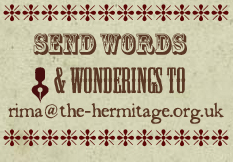

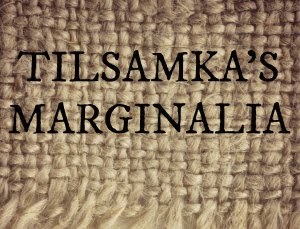




















































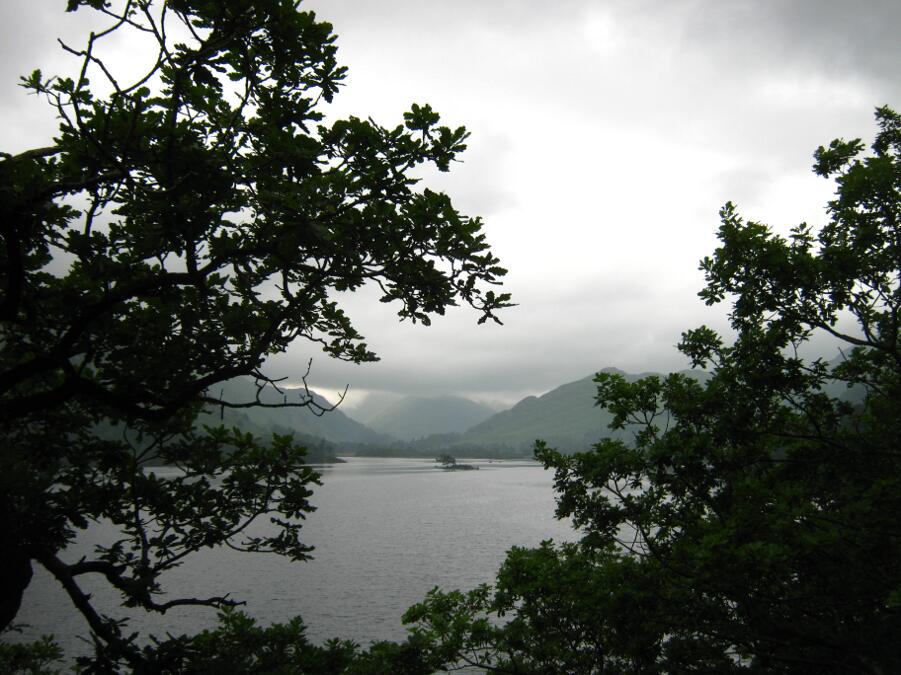



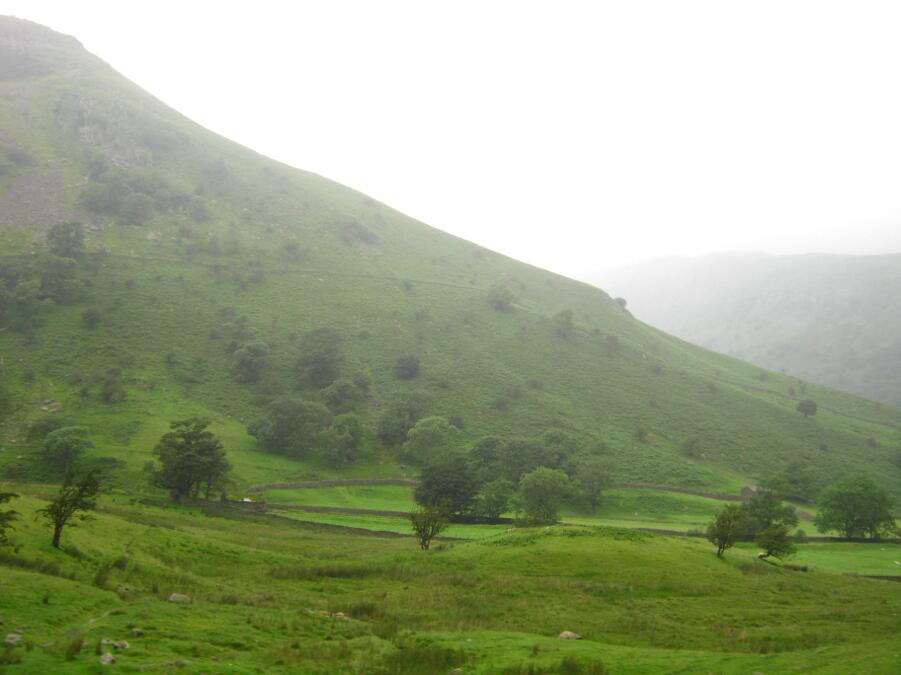










































































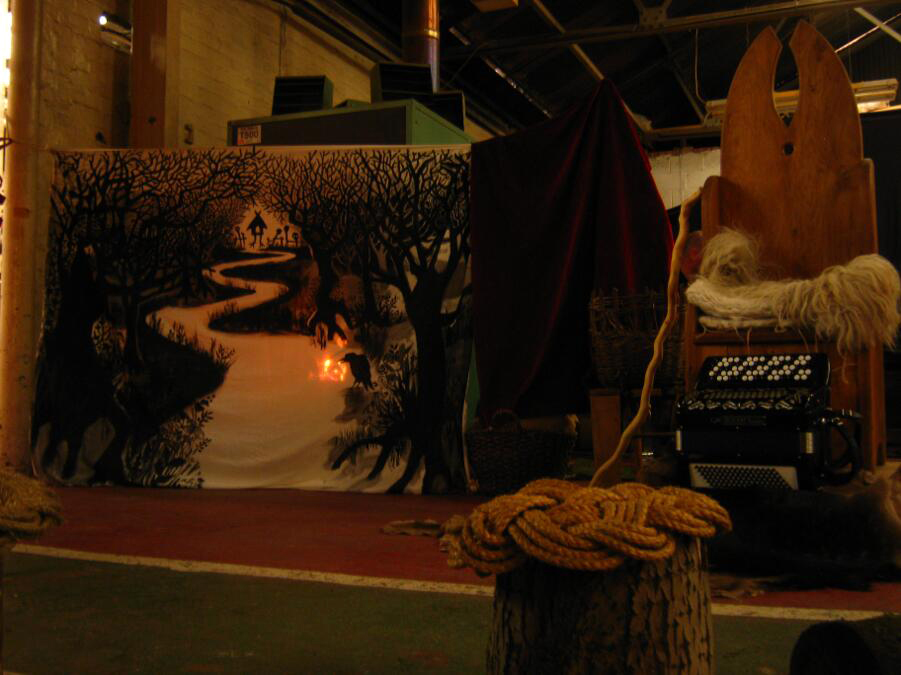










































































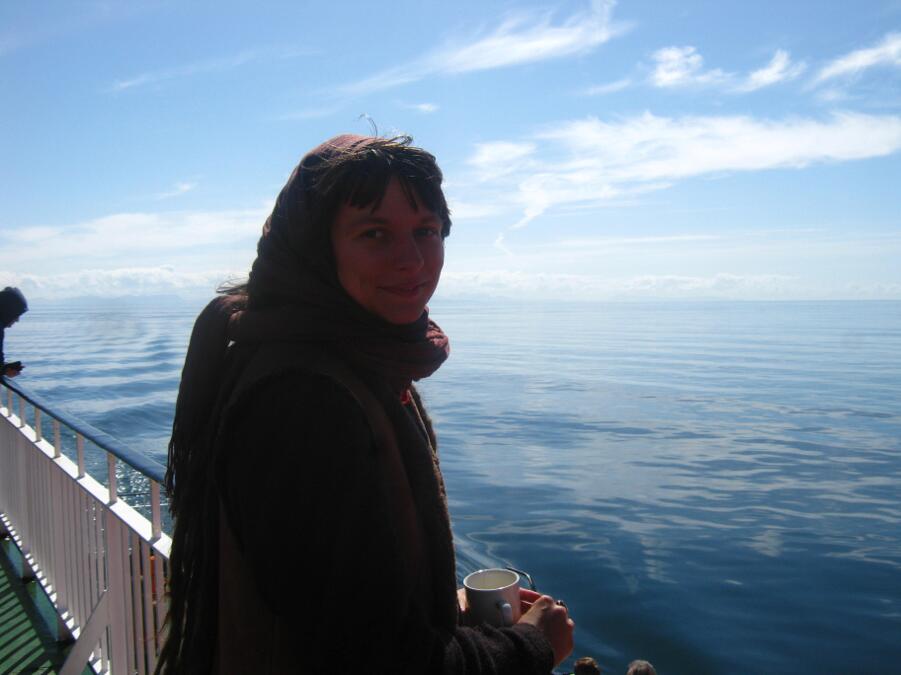
























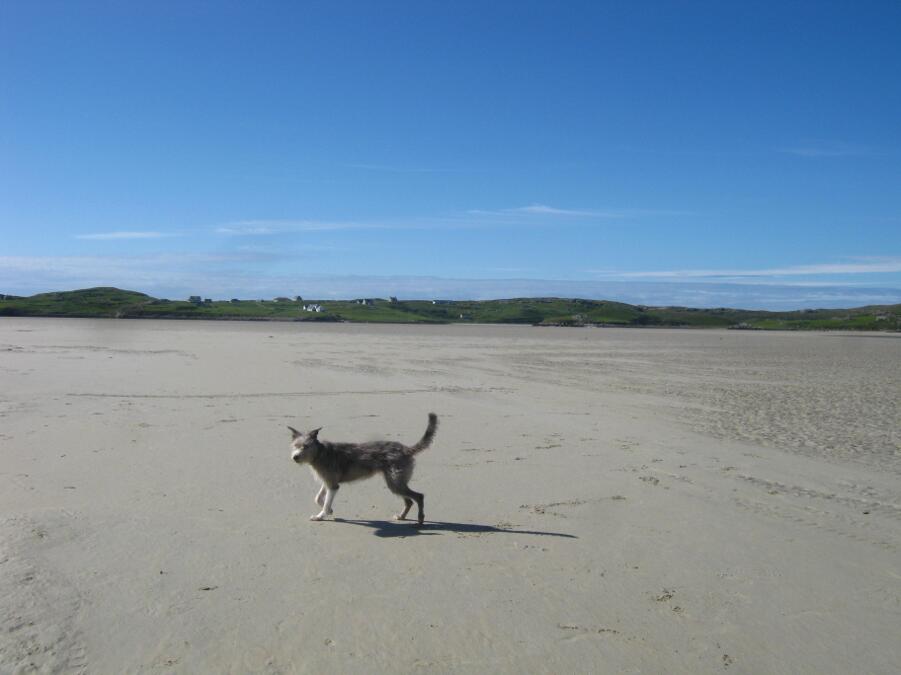





















































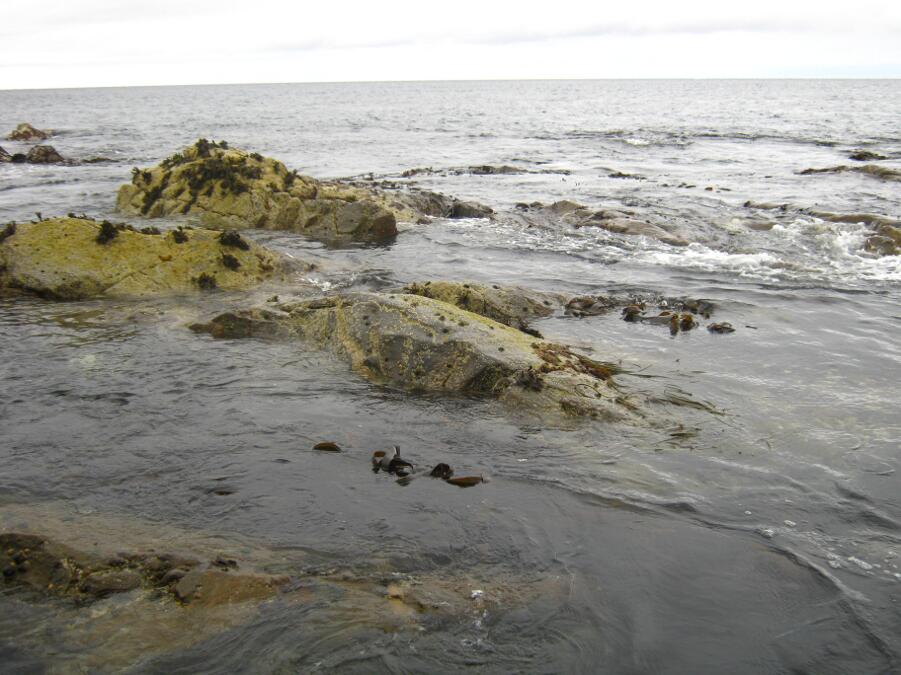































































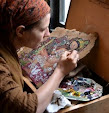

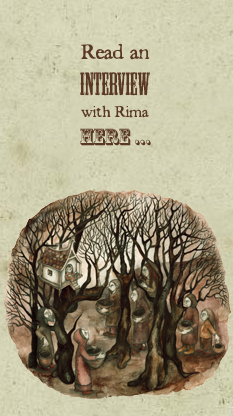

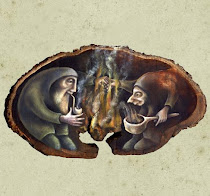
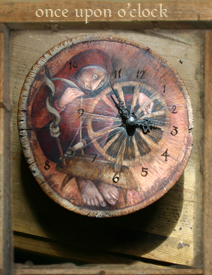


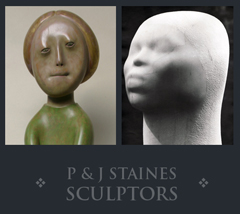




















31 comments:
What a fantastic time you had ! Loved hearing about Galgael and the Isle of Lewis in particular. And your back drop looked amazing :)Love from all us three xxx
Rima~
I am sitting by my woodstove on a crisp autumn morning reading this post. What a magical journey you have been on... I feel like I have opened an old story book, richly illustrated and poetically written. It might take me some time to arrive back on my Canadian Homestead after being in Scotland for the past 45 minutes with you and Tom. Your words are a gift. The life you live is a constant and shimmering inspiration. Thanks for taking the time to write it all down (and with such fluid and captivating articulation). Thank you for sharing your incredible journey. I delight in your posts and when one comes in, I always boil the kettle first. Harvest Blessings~ To you and Tom and the beautiful Macha.
Nao
No that I want to spoil the mystery but... the little green riddle is the caterpillar of an Emperor Moth - a very fine beast with big 'eye' markings.
David
Sweet memories of that lovely evening at Breanish. Beautiful epic post xx
Thank you for the memories - we miss our visiting angels already. Come back for peat fires any time! Much love x
Beautiful photos and words -
Maura
I became completely absorbed in reading this post, thanks for sharing :)
what a remarkable journey, love the photo of you two totally beaming, Shine On!
Goodness.
I really enjoyed that post, Rima.
*Thank you*
Scotland is something else.
I wonder if you'd read "Lost in the Taiga"? I think you'd enjoy it muchly.
Wishing you many jaunty walks and hot cups and slaphappy grins this autumn!
x- Tiff (of Wonderful Wonky Wood)
What a beautiful journey this is, and a joy to read. I was wholly absorbed for about 45 minutes myself, with a hot cup of coffee and warm milk and sugar (a perfect companion for the rainy, woodsmokey, magic, highland tales contained here!) at hand. Thank you for sharing such beauty here-- I know of no other place on this strange internet web that compels me (and so many others!) to drop everything and make tea or coffee at the sight of a new post. So, thank you and almost-Samhain blessings upon you all! xo, Sylvia
Your life seems so full of beauty, how lucky you are to be able to experience it so fully. Thank you.
Blessings,Flora
wow Rima - well, you may not have posted in a while but you certainly balanced that out with this one. thank you so much for the gift of your well chosen and luminous words and pictures. sometime I may come back and listen to the recording of your performance and yet to take the time to amble through a post like this feels like absorbing a different sort of tale & performance.
very much loved the picture of you and Tom towards the end. looks like the happiness I would wish for you is fully present.
Aloha! Roy
Oh Oh Oh. Gems and jewels in photos and words. What a journey.
Thank you so much for the little window on your reality! Stunning photos of the North. Makes one stand and wonder, 'where are we all rushing to?!'
Greetings to you three from the west coast of Canada.
I always eagerly await your posts. What a stunning life you live. You make me dream.
Thanks so much for sharing it with us.
Thank you for taking us on your journey...what a wonder...I felt such a pull on my heart as I looked at the land my ancesters left just 250 years ago in search of a new home in America. I hope one day my feet will walk that land and feel the richness there. What a great adventure you and Tom share...you both glow. So happy for you
Rima, that was wonderful. And the photos are fantastic. Thanks so much for sharing. I've got totally itchy feet now!
This was the perfect way to begin and then end my day (class came in between, unfortunately), I really cannot wait until I can see these beautiful lands in person again.
Thank you for sharing this, it was a most marvelous tale
harsh, wild, gritty, lovely, industrial, you have told it all and well. what a journey!
Thank you, Rima, for singing us this song of your Summer! From South to North and South again, you've given us delights and wonders to dream on in these darkening days.
Beautiful and magical, thank you :)
Fantastic!
An epic and beautiful tale that seems to belong in an old leather bound book, not this harsh time of billboards and highways and road signs. How magically you transport us, wherever in the world we may be, to be right there with you seeing that wild beauty, listening to the babble of the rivers, hearing the whistle of a kettle over a little wood stove deep in a green forest. Magic, Rima, just pure magic!
Thank you for this post of jumbo and epic proportions. Just how I like them... The pictures and words were a treat, but a special thank you for that audio clip. It went very well with the sound of rain and the sipping of tea. Thank you, thank you...
A lovely long post that was well worth waiting for! We were in Skye a couple of weeks before you were there so I was particularly interested to hear about your journey so far north! It brought some memories back to me seeing those mountains, such familar shapes, as though I'd lived there rather than visited briefly. :)
Jess xx
Awe inspiring...! I love the intrepid nature of your need to tell stories.
That journey was so incredible, and a feast for my eyes, here in my little city. Just beautiful.
Thank you so much for making this Beauty-full post, for bringing all this exquisite fresh enormity and all these sweet details here to me. You took me on a vast lovely voyage with the written words and pics, and I look forward to returning to savour the Rocks, the Air, andandand, and your generous recording too. Big warm thank you! xxxj
So very gorgeous and moving. I sat here transfixed by the wonder of your travels. I wish to be part of your audience one day. But for now I get to enjoy your tales from far away. I am always surprised to see the similarities of what you see to my backyard and maybe that helps me feel connected to your stories.
Thank you.
Dear Rima-
Thank you for the beauty of your blog. The rains have returned at last to my Oregon homeland and I was craving a post from you.Something of woodsmoke and stories and greenness. When I think of The Hermitage and your art I have this amazing feeling of both closeness and expansiveness that is so hard to explain. It is at once wild and as familiar as my own nest and I am so grateful for every exquisite post.
Thanks so much for this. Exuding warmth, beautifully told. Can there be anywhere as extraordinary as under a canopy of mature beeches?
Robert
Post a Comment